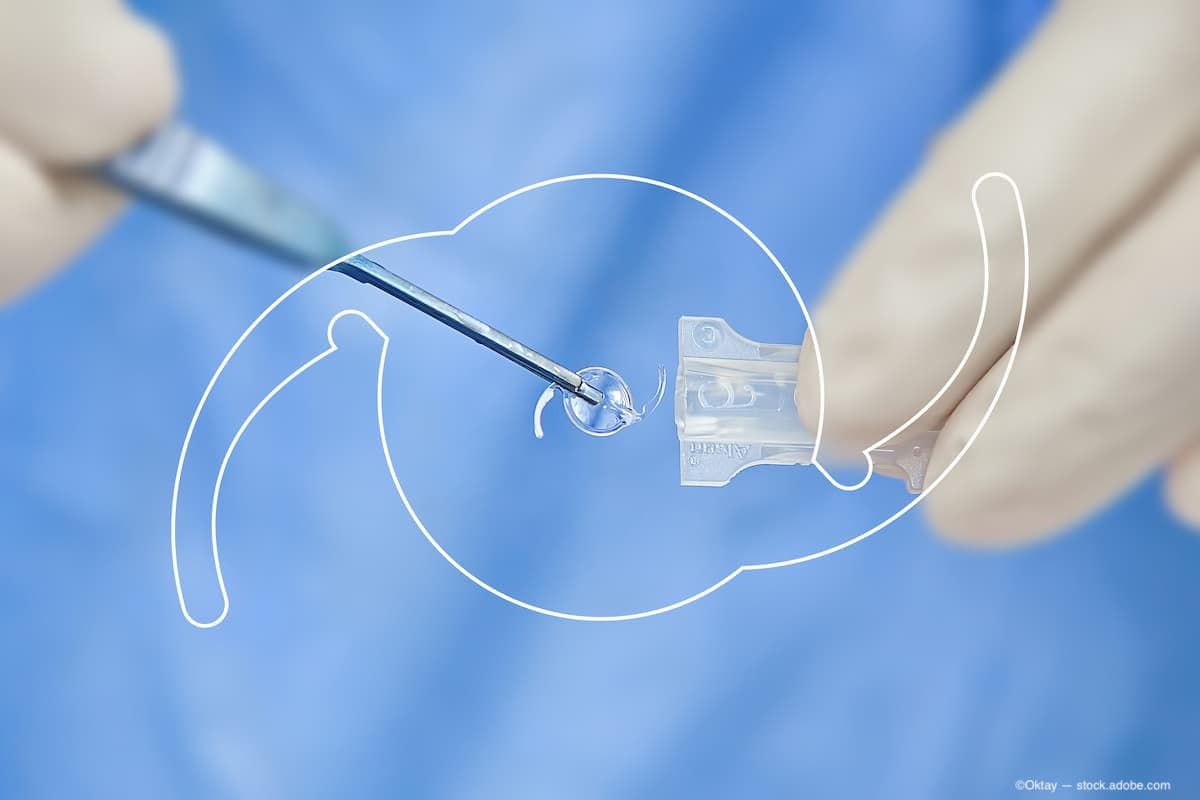Article
New IOL, automated delivery system expected to transform market
Author(s):
By Cheryl Guttman Krader;Reviewed by Gerd U. Auffarth, MD, PhD, and Stephen S Lane, MD
Alcon Laboratories received CE Mark approval in July 2017 for its new monofocal hydrophobic acrylic intraocular lenses (IOL), called Clareon. Three months later, the company’s disposable, automated delivery system preloaded with the Clareon IOL (AutonoMe) gained the CE Mark. Both the Clareon IOL and the AutonoMe delivery system are being called market innovations.

The Clareon IOL is constructed of a novel hydrophobic acrylic material and has the benefit of reduced potential for glistening development.
The Clareon IOL is constructed of a novel, patented hydrophobic acrylic material that maintains the desirable performance characteristics appreciated by surgeons using AcrySof IOLs (Alcon) and has the benefit of reduced potential for glistening development.
The AutonoMe incorporates a carbon dioxide-powered delivery mechanism, was designed for ease of use, and gives surgeons precise control over IOL insertion.
“The AutonoMe delivery system is the first and only disposable, automated, preloaded delivery system in the world,” explained Stephen S. Lane, MD, chief medical officer, Alcon, Fort Worth, TX. “It will change the way in which surgeons deliver IOLs into the eye. It is easy and intuitive to use and allows for predictable delivery of a truly pristine premium IOL that is made of a new hydrophobic biomaterial with unsurpassed clarity.”
The lens and delivery system have received the CE Mark and were launched at the 2017 European Society of Cataract and Refractive Surgeons meeting. The lens and delivery system are not yet approved in the United States.
Unique polymer material
Research conducted by Gerd U. Auffarth, MD, PhD, and colleagues confirms that Clareon’s novel hydrophobic acrylic biomaterial resists glistening formation. They used a laboratory model that accelerates formation of these fluid-filled microvacuoles and image analysis software to quantify their number, size, and volume.
“This model exposes the IOL to tough testing conditions and the results showed that the new biomaterial lived up to expectations in terms of retaining optical purity,” said Dr. Auffarth, professor and chairman, Department of Ophthalmology, and director, International Vision Correction Research Centre, University of Heidelberg, Heidelberg, Germany.
Analysis of the central area of the optic where glistening is likely to develop first showed a mean glistening count of just 4.09 microvacuoles/mm2. That value translates into a rating of 0 on the Miyata Scale for clinical glistening grading and classifies the material as “glistening free.”
Another in vitro study investigated the interaction between the novel biomaterial and a cohesive ophthalmic viscosurgical device (OVD; ProVisc, Alcon) after implantation in porcine eyes and an autopsy eye model. The results showed that the OVD was easy to remove. In addition, the IOL demonstrated excellent positional stability in the capsular bag during OVD removal.
“It is important that surgeons who are comfortable and happy with the intraocular behavior of the AcrySof IOLs not feel there are unwanted differences using this new IOL,” Dr. Auffarth said. “We found that the time taken to perform complete removal of the OVD in eyes implanted with the Clareon IOL averaged about 26 seconds and was not significantly different compared with the AcrySof IOL.”
Another study evaluating capsular bag performance showed that compared with an AcrySof IOL, there was a larger arc of contact between the IOL haptic and capsular bag equator with the Clareon IOL. With the Clareon IOL, there was also less capsular bag striae and ovalization.
“The material of the Clareon IOL is softer and it seems to fit better in the capsular bag compared with the AcrySof IOL,” Dr. Auffarth said.
Yet another laboratory investigation found that silicone oil adhesion to the new biomaterial was also low.
Disruptive-free delivery technology
Dr. Lane said the AutonoMe is comfortable and ergonomic. It is designed for single-handed delivery of the IOL, and so surgeons in the habit of performing wound-assisted IOL insertion can continue using that technique.

The AutonoMe incorporates a carbon dioxide-powered delivery mechanism, was designed for ease of use, and gives surgeons precise control over IOL insertion.
Like the UltraSert Pre-loaded IOL Delivery System (Alcon), the AutonoMe incorporates the depth guard and lockout assembly features. Inner and outer diameter nozzle tip dimensions of the AutonoMe are similar compared to the UltraSert, but the AutonoMe has a slightly longer nozzle tip.
“This difference further enhances reproducibly accurate, precise IOL delivery,” Dr. Lane said.
When using the AutonoMe, puncture of the carbon dioxide cartridge allows the IOL to be advanced. The device is held like a writing instrument and surgeons push gently down on a lever to initiate IOL advance and control its speed.
Dr. Lane noted that a study performed by Thomas Kohnen, MD, using human cadaver eyes, demonstrated that good incision integrity was maintained when using the AutonoMe to deliver the Clareon IOL through a 2.2 mm incision.
“Similarly, there was very good wound apposition after IOL delivery performed with the UltraSert,” Dr. Lane said. “In contrast, the use of preloaded IOL delivery systems from other manufacturers were, in some cases, found to cause detachments in Descemets membrane and disruption of the incision.”
Stephen S Lane, MD
e. sslane@associatedeyecare.com
Gerd U. Auffarth, MD, PhD
e. auffarthg@aol.com
Dr. Auffarth receives research grants, travel expenses, and lecture and consulting fees from Alcon Laboratories and other companies that manufacture IOLs. Dr. Lane is an employee of Alcon Laboratories.
Newsletter
Don’t miss out—get Ophthalmology Times updates on the latest clinical advancements and expert interviews, straight to your inbox.





